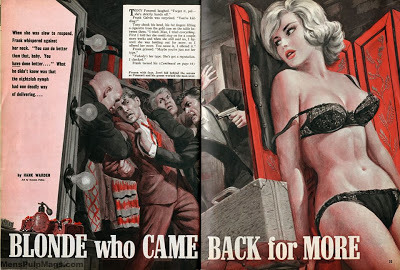Paul Bishop's Blog, page 61
October 20, 2013
THE TROUBLE WITH BLONDES!
Published on October 20, 2013 20:46
October 18, 2013
PUTTING WRITING FALSEHOODS AGAINST THE ROPES
 PUTTING WRITING FALSEHOODS AGAINST THE ROPES
PUTTING WRITING FALSEHOODS AGAINST THE ROPESFIGHT CARD ROMANCE: LADIES NIGHT AUTHOR CAROL MALONE (WRITING AS JILL TUNNEY) BLOGS OVER AT THE WRIOTER’S FUN ZONE ABOUT WRITING FALSEHOODS ...
 Today Writer’s Fun Zone welcomes author Carol Malone (Fight Card Romance: Ladies Night) as she shares with us her writing tips discovered during her writing journey to publishing her first e-book.
Today Writer’s Fun Zone welcomes author Carol Malone (Fight Card Romance: Ladies Night) as she shares with us her writing tips discovered during her writing journey to publishing her first e-book.
Don’t start your writing career believing falsehoods: learn the art of writing.
I’ve been on a serious writing journey for awhile and just published my first eBook. While walking that path, I’ve discovered a lot of things about myself and the writing process. Even as an amateur, I’d love to share what I’ve learned in the hopes it will keep someone else’s feet on the trail toward their dreams of successful publishing. I held certain beliefs regarding writing that have proven to be false. Here are my top five ...
FOR THE FULL ARTICLE CLICK HERE
Published on October 18, 2013 15:28
October 16, 2013
FRONT PAGE PALOOKA'S SPOTIFY SOUNDTRACK!
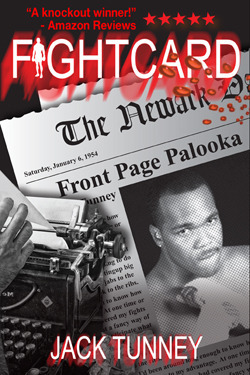 FRONT PAGE PALOOKA'S SPOTIFY SOUNDTRACK!
FRONT PAGE PALOOKA'S SPOTIFY SOUNDTRACK!Fight Card author Anthony Venutolo created the following Spotify soundtrack, which he listen to repeatedly while writing Front Page Palooka ...
Published on October 16, 2013 15:14
PULP NOW ~ DOC SAVAGE: THE MIRACLE MENACE
 PULP NOW ~ DOC SAVAGE: THE MIRACLE MENACE
PULP NOW ~ DOC SAVAGE: THE MIRACLE MENACELESTER DENT / WILL MURRAY
Pulp maven Will Murray again delivers top-notch pulp action in his latest Doc Savage novel. Writing under Lester Dent’s original Doc Savage pseudonym, Kenneth Robeson, Murray shows both his understanding of Dent’s writing system, and his affection for the form and the character. In this latest ‘wild adventure’ of Doc Savage, Murray hews ever closer to the original tales with breakneck-paced action coupled with an adroit handling of a fantastical plot, which in lesser hands would have spiraled out of control. Murray long ago earned his pulp chops, but he continues to breath new life into the genre in a way that raises his contributions above the level of more mortal pulp writers. Great stuff ... Read it now ...
DOC SAVAGE: THE MIRACLE MENACE
When out of work magician Gulliver Greene stumbles upon a man who claims to be Christopher Columbus, still alive in 1937, it's only the start of the most complex plot ever to involve the incredible Doc Savage.
Called to the sleepy farm town of La Plata, Missouri, the Man of Bronze plunges into the enigma of the vanishing Victorian house. Is it haunted? Is it even real? Can Doc solve the mystery – or will he be sucked into the unknown vortex into which it disappears?
From his supersecret Crime College to a sinister island in the Great Lakes, Doc Savage and his brilliant team race to assemble the most baffling webwork of Halloween horrors ever encountered.
For many weird mysteries beyond human ken converge in the Missouri wilderness in this, the wildest Doc Savage adventure yet!
Published on October 16, 2013 12:41
PULP NOW: NO FREE LUNCH
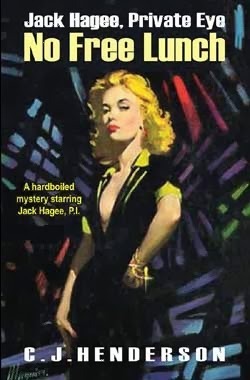 PULP NOW: NO FREE LUNCH
PULP NOW: NO FREE LUNCHA JACK HAGEE, PRIVATE EYE NOVEL
C. J. HENDERSON
COVER: ROBERT MAGUIRE
COMING IN FEBRUARY FROM MOONSTONE BOOKS!
LONG OUT OF PRINT! SIGNED BY THE AUTHOR!
In this shattering novel of private investigation and public scandal, private eye Jack Hagee takes on the search for a small town runaway. Mara Phillips' rich boyfriend wants her found, but may not be telling the whole story. His is only one of the bodies that will be found in this stunning tale of greed and murder set against the background of NYC's most depraved sex club. This is CJ Henderson's greatest character at his absolute best!
This edition comes with the bonus Jack Hagee short Bop Bop, in which Hagee tracks a murderous bail-jumper in Detroit.
HARDCOVER /222 PAGES / $28.99
Published on October 16, 2013 11:16
COMICS NOW ~ THE SAINT: THE MAN WHO WAS CLEVER
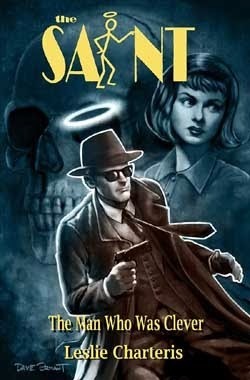 COMICS NOW ~ THE SAINT: THE MAN WHO WAS CLEVER
COMICS NOW ~ THE SAINT: THE MAN WHO WAS CLEVERSTORY: LESLIE CHARTERIS / MEL ODOM
ART: DAVID BRYANT
COMING IN FEBRUARY FROM MOONSTONE BOOKS!
THE FIRST EVER GRAPHIC NOVEL FOR THE SAINT ...
“Adventure came to him not so much because he sought it as because he brazenly expected it. He believed that life was full of adventure, and he went forward in the full blaze and surge of that belief." – Simon Templar seeks to bring a drug smuggler to justice. In this story, Templar is shown in the process of establishing his reputation as a crime buster working with a team of mysterious individuals (akin to Robin Hood's Merry Men). Patricia Holm, Templar's love interest and fellow adventurer appears as well.
TOLD IN WIDEVISION
HARDCOVER / 7” X 10” / 80 PAGES / $19.99
Published on October 16, 2013 11:12
October 13, 2013
PULP NOW: QUEEN OF ESCAPES!
 PULP NOW: QUEEN OF ESCAPES!
PULP NOW: QUEEN OF ESCAPES!CURTIS FERNLUND
AIRSHIP 27
The time is 1935. After a decade of fame as the Queen of the Serials, Hollywood actress Gloria Swann is dismayed to see her box-office numbers dwindling with each new production.
Desperate to reclaim her popularity, she bankrolls her own film project; an over the top jungle adventure to be shot on location in the wilds of the Amazon rainforests of Brazil. After the crew and cast arrive at their isolated destination, a series of accidents occur threatening the lives of several of the players. The main target of these unexplained mishaps is Swann’s younger stunt double, Angela Morgan.
She suspects there are evil forces lurking in the jungle that threaten their safety. Her only ally in this belief is veteran stunt coordinator Karl Braun. When Gloria Swann mysteriously disappears, Angela may be the only hope the Queen of Escapes has to survive.
Writer Curtis Fernlund’s homage to the classic film serials of yesterday is a rousing, fast paced adventure that speeds from one danger-filled cliffhanger to the next. James Lyle provides marvelous interior illustrations and Andy Fish captures all the fun in his gorgeous cover painting, packaged and designed by Rob Davis.
Published on October 13, 2013 18:22
October 11, 2013
THE TROUBLE WITH BLONDES
Published on October 11, 2013 06:29
October 10, 2013
PULP NOW: LOST LAWRENCE BLOCK NOVEL!
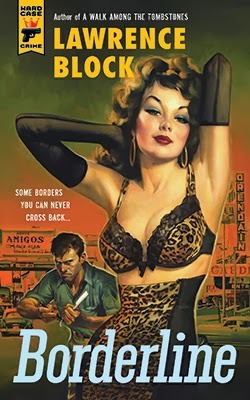
PULP NOW: LOST LAWRENCE BLOCK NOVEL!
NEWS FROM HARD CASE CRIME
THE SCORCHING PULP NOVEL BY LAWRENCE BLOCK, AVAILABLE FOR THE FIRST TIME IN 50 YEARS!
PER HARD CASE CRIME EDITOR CHARLES ARDAI ...
We’d been saving this for a special announcement but Amazon just beat us to the punch by posting the book on their site, so we figured we should spill the beans as well: next May we’re going to be publishing a lost pulp novel by MWA Grandmaster Lawrence Block, one that hasn’t been published in any form for more than 50 years and has never previously been acknowledged to be Block’s work.
The book is called Borderline, and it’s a doozy: a violent, intense story about five lives colliding on the border between El Paso, Texas and Juarez, Mexico…the border between the right side of the law and the wrong…and the border between sanity and madness.
To avoid any possible confusion, let me note that this is not the new book that Lawrence Block has mentioned he just finished writing. I’ve had the privilege to read that book as well, and it’s fantastic – one of the very best he’s written in years – but it’s as different from this one as green is from red or up is from down. To start with, that one is brand new and this one is half a century old. That one’s coming out for Christmas this year (Larry’s self-publishing it), and Borderline is coming out in time to be your favorite summer read next year. If you’re a fan of Larry’s work, you’ll definitely want to read both.
BORDERLINE
On the border between El Paso, Texas, and Juarez, Mexico, five lives are about to collide—with fatal results. You'll meet:
MARTY—the professional gambler who rolls the dice on a night with...
MEG—the bored divorcee who seeks excitement and finds...
LILY—the beautiful hitchhiker lured into a live sex show by...
CASSIE—the redhead with her own private agenda...
and WEAVER—the madman, the killer with a straight razor in his pocket, on the run from the police and determined to go down swinging!
This is MWA Grand Master Lawrence Block at his rawest and most visceral, a bloody, bawdy, brutal story of passion and punishment—and of lines that were never meant to be crossed. TO READ THE FIRST CHAPTER CLICK HERE
Published on October 10, 2013 07:51
October 9, 2013
PULP NOW: PUNCHING UP YOUR PROSE!
 PULP NOW: PUNCHING UP YOUR PROSE!
PULP NOW: PUNCHING UP YOUR PROSE!AUTHOR, STUNT MAN, AND ALL-ROUND ADVENTURER, TEEL JAMES GLENN BREAKS DOWN THE WRITING OF GREAT FIGHT SCENES ...
I have spent the better part of the last 37 years being beaten, stabbed, set on fire and hit by cars – for money.
That’s right, I’ve been a stunt monkey since I got out of art school and ran into a guy at a party who was looking for someone to storyboard a film. The film had a fight scene, I designed it, got cast in the film, did the fight and never looked back.
I studied martial arts, boxing, gymnastics and then the more exotic skills like car hits, stair falls, fire burns and most enjoyably, sword fighting (I got to do that with Errol Flynn’s last stunt double).
But time marches on and, as they say, there are old stunt men and bold stuntmen but no old, bold stuntmen. I eventually returned to my first love, writing, and launched on a career of pulp adventure tales. It seemed only natural that my stories reflected my background and had a lot of action (my literary idols were Burroughs, Howard and Hammett). Soon I got a reputation for my actions scenes.
I applied the same principles to the action in my stories as I had to all the fights I choreographed over the years but I now also, as the writer, was responsible for determining when and where action scenes showed up in the story and this fact made me do some serious examination of how and why I wrote them.
Here are a few thoughts that might help my fellow writers...
Since the first storyteller sat around a campfire spinning tales of gods and heroes it has been a given that a little action makes a mildly interesting story into a real grabber. Put your hero or heroine in physical jeopardy and you can have a winner. Conflict is the key and physical conflict, i.e., a fight, is often the answer.
It is not the only answer, to be sure, and emotional conflict is the essence of real drama, but the line where drama ends and adventure or melodrama begins is an iffy one. If the level of your drama is high, if the characters are convincing and we as a reader care about what happens to them then you can get a frenzy of worry out of us by having a villain try to club our hero. Or shoot him or…you get the idea.
A writer has to be careful that the action is not hastily added in or used as a patch between talking head scenes. This cheats the reader and the writer of great opportunity to explore how the characters react in stressful situations and the chance to inform the readers of some facts about the characters. Where did the character learn to do a certain move, or what about the fighting style of the bad guy triggers a memory from our heroine’s past?
Since the fight has to serve the purpose of the story you have to use the same criteria as any journalistic or dramatic story. Ask yourself, ‘is this fight necessary?’ If it is then you can use the old six questions: Why, Who, How, Where, What and When?
WHY
Why is this fight the solution to this moment of the story, instead of a dialogue scene? After all, Shakespeare put the fight at the end of Hamlet for two very strong reasons. It was the dramatic climax that brought together several plot threads, and it was used as a device to reveal the true personalities of the major participants: Laertes regrets using the poison, Hamlet is proud of his swordsmanship, Claudius reveals his cowardice etc.
There are four chief reasons to have a fight in a story, though often a fight (or action scene) can and should serve more than one of these reasons.
To amaze or confuse a character.
To scare a character.
To conceal/reveal some plot point within the smoke and mirrors of an action scene.
To reveal or accentuate a character trait.
WHO
Who is involved in the action; the principal? A secondary character? If so, what is their stake in the confrontation (their personal why)?
HOW
How did the fight come about? How does it end? And in what state are the participants when it is all over? Will there be lingering effects? And will the effects be physical or mental or both? There is also the mechanical how of a fight; that is, how to plan it out. You can’t build a house without a plan and just as you would plan out a book or story by making an outline you must do the same thing with the ‘story’ of a fight.
WHERE
Where does the action take place? Is it an interesting enough place, i.e. a kitchen, a garage, a spaceship port? What makes that place of particular interest? Does it add color to the story, or is it just a drab background, a diorama in front of which the action takes place?
WHAT
What is involved, physically in the fight? A sword fight; if so, what style? Or styles. Do they use the objects at hand or did they bring the ‘death dealers’ with them. (Jackie Chan movies are especially good at finding clever things to do with found objects in action scenes—you don’t have to be ‘clever’ funny but you should clever smart).
WHEN
When is it appropriate to have a fight instead of a non-physical solution? I know I keep stressing this, but that cuts to the heart of the situation of many literature snobs who will not deal with any ‘action’ because they feel it cheapens the purpose of a story.
FLAVORS OF VIOLENCE AND THE ‘OUCH’ FACTOR
A grim, down and dirty knife fight might be fine for a thriller, but wrong for a romantic comedy. Once you understand that it hurts you can think about the ouch factor, that is, how much damage and how much recovery time.
This is where the flavors come in – how you balance these elements: how real, how much pain, and to what end the action in the scene in the story determine if the fight is farce or frightening.
So how does it break down – what makes a fight funny or scary or realistic?
EXERCISES TO LIVEN YOUR FIGHT SCENES
Not everyone is a fight choreographer, but every one can choreograph a fight. Really. The first thing you do is to decide the type of fight. For argument’s sake we will assume you want to design a sword fight with short swords.
Now, I know you probably don’t have any short swords sitting around the house. No problem. Get some rolled up newspaper and a congenial friend/mate/sibling. Now, slowly, as in really slow like an old Six Million Dollar Man episode, walk through five or six moves.
Just like a slow motion dance. Then write it down; but in the writing, the newspapers become real swords and you are moving at breathtaking speed.
Now this may not be possible. You might not be able to physically execute the moves, or have a long suffering conspirator to collaborate with.No problem. Just let the inner child out and get a couple of movable action figures. Even the art store pose-able figures with no features. Tape some short swords made out of pop sticks into their hands and let them do your fighting for you.
Then write it all down.
When painting students are learning their art they are instructed to copy the paintings of great master, stroke for stroke and it is considered perfectly okay. No legal hassles at all. Okay, now that you’ve read the stories, or story, you have a big task ahead: rewrite it. That’s right, take Conan or Tarzan or whomever and the general situation of the scene and –without peeking – write your version of it. May be your only chance to write your hero without a copyright lawyer running after you. It’s best to do it for a scene you read ‘last book’, or earlier in the book, and once you decide on the scene don’t go back and peek. Cheaters never prosper!
Then put it aside for a day or so before going back to compare them. It doesn’t matter if you unconsciously copied some phrases or exact actions, it is bound to happen, it is the idea that you can achieve some of the energy or flow of the story – and who knows, you might improve on it. Could happen!
What is the appropriate level of you character’s skill?
The choices extend beyond purpose and tone for a fight, it must also be appropriate to the time, place and character.
I mean, really, Babe Ruth should not be swinging an aluminum baseball bat unless it’s a time travel story and if your 1860s cowboy hero starts throwing jumping martial kicks he better be named James West!
A certain amount of credibility with your reader is purchased from their imaginations with the preconceptions of what they expect verses what is credible or possible.
Martial arts have points of origin: you can’t have a Bowie knife fight before 1827 because the indomitable Jim Bowie hadn’t invented it (or perfected his brother’s invention – whichever version you believe). And fighting with a Bowie is significantly different than than fighting with other knives, or swords, because while it shares characteristics of both it is its own beast.
Thus you see how very important to the believability of the story it is to get the How or with what you characters fight with. Those factors and their attitude to the action are all great means to understand who they are and how they fit into the mosaic of the story’s world.
 ABOUT THE AUTHOR
ABOUT THE AUTHORTeel James Glenn has written on theater, stunts and swashbuckling related subject matter for national magazines like: Aces, Black Belt, Echoes, and Fantastic Worlds of E.R.B. and fiction for MAD, Weird Tales, Peculiar Stories, Pro Se Presents, Fantasy Tales, Afterburns, Another Realm, Blazing Adventures!, Tales of Old and other magazines. He has 30 books in print including his newest The First Synn: The Bloodstone Confidential from Pro Se. He received the Pulp Ark Award for best author in 2012.
He has taught staged/stunt combat at colleges and choreographed fake violence for over 300 plays and 55 Renaissance Festivals. He has been a martial artist most of his life and stunt coordinator for 70 films He has appeared as an actor and stunt performer in over three dozen more as well as all the New York soap operas. He has also conducted seminars for theatrical groups from Florida to Canada in staged combat and taught self defense and anti-rape classes nationwide. You can keep up on his adventures at www.theurbanswashbuckler.com
Published on October 09, 2013 12:27


